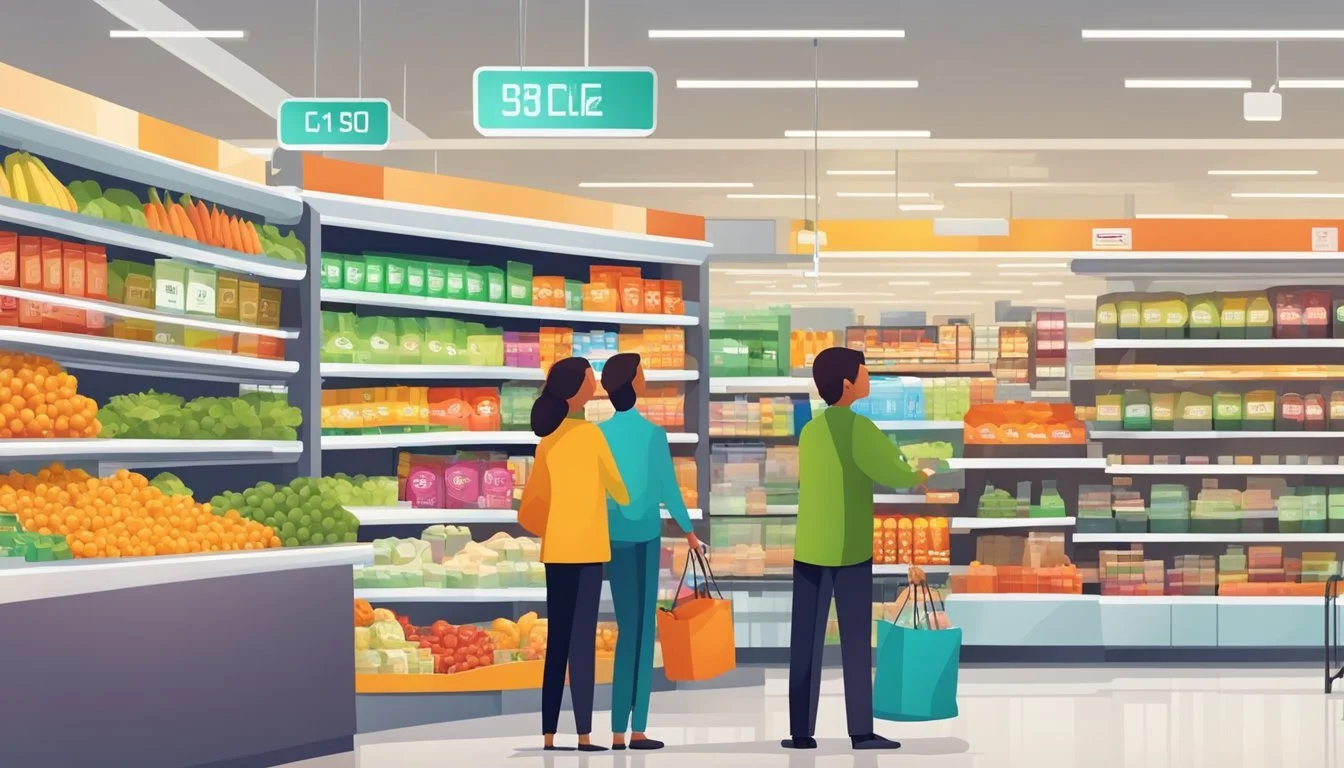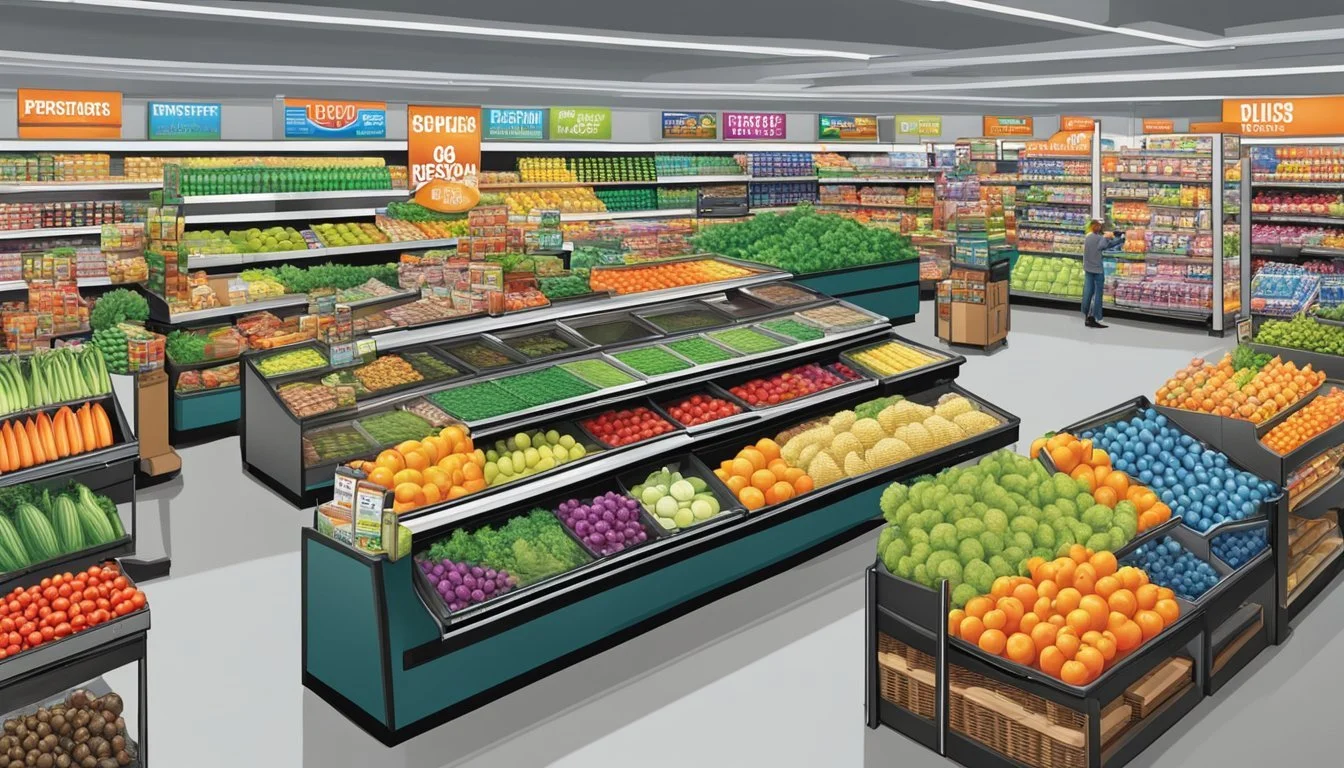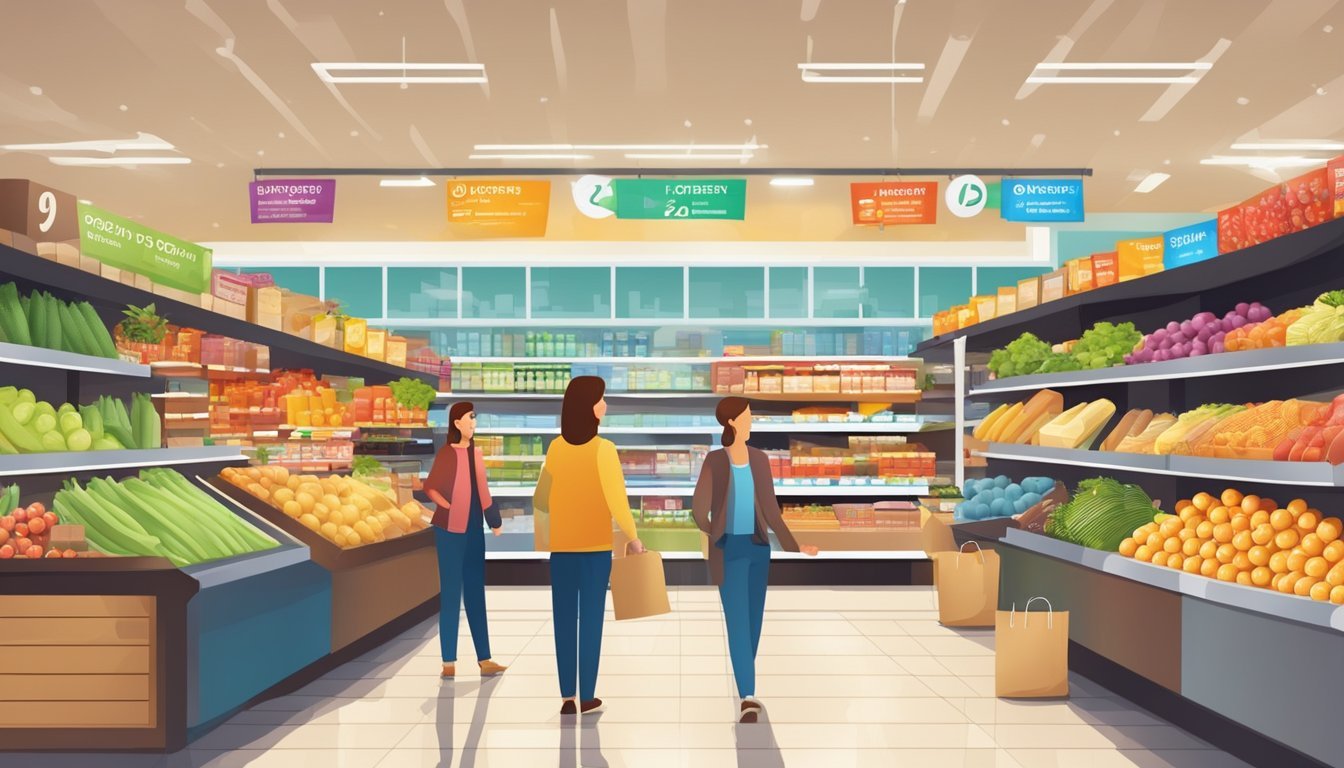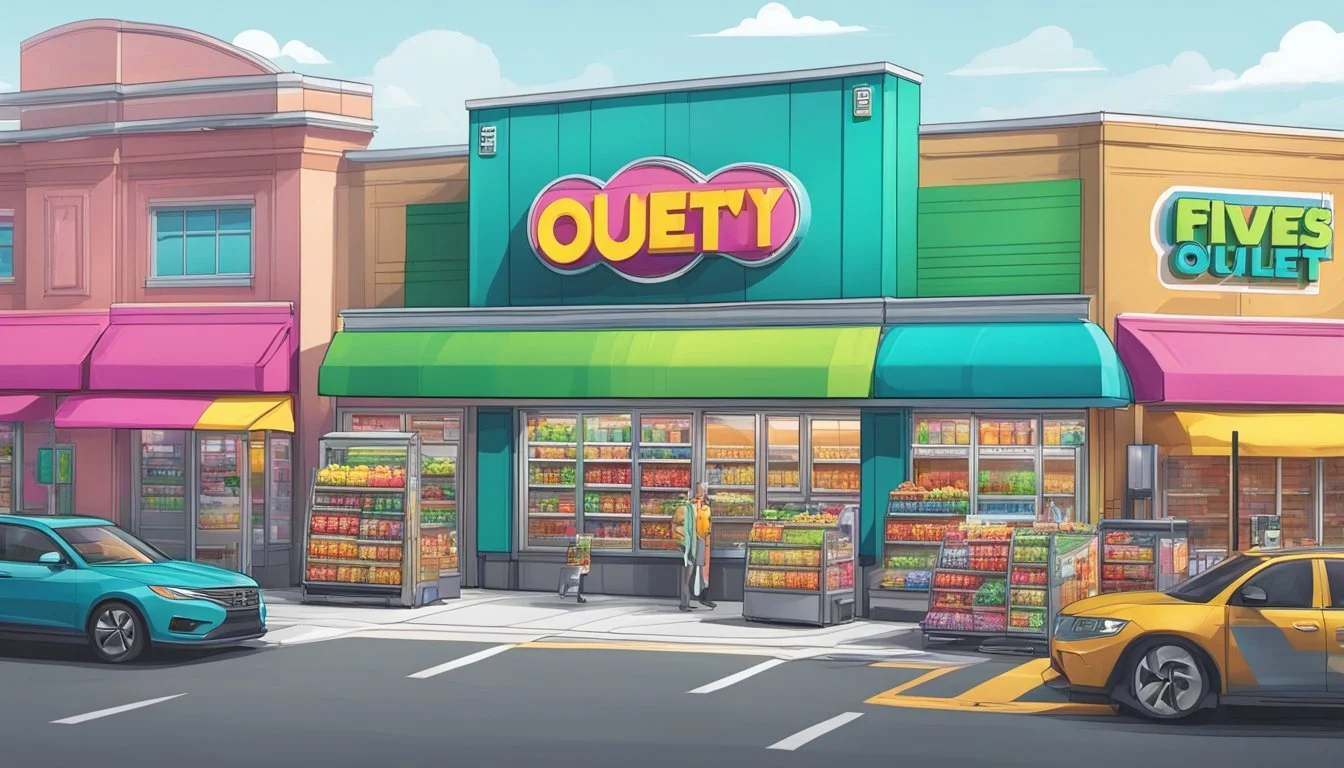Five Below vs Grocery Outlet
A Comprehensive Comparison of Budget-Friendly Options
Five Below and Grocery Outlet offer unique shopping experiences for budget-conscious consumers. While both aim to provide value, they cater to different needs and product categories.
Five Below focuses on trendy, low-cost items across various categories, including toys, accessories, and home decor. Grocery Outlet, on the other hand, specializes in discounted groceries and household essentials. Grocery Outlet typically offers better prices on food and everyday items, making it the superior choice for grocery shopping.
Each store has its strengths. Five Below appeals to those seeking affordable gifts and novelty items, while Grocery Outlet attracts shoppers looking to save on their regular grocery bills. The choice between the two depends on individual shopping priorities and specific product needs.
Company Overviews
Five Below and Grocery Outlet are distinct retailers with unique histories and business approaches. Both companies have carved out niches in the discount retail sector, appealing to budget-conscious consumers in different ways.
History of Five Below
Five Below was founded in 2002 by David Schlessinger and Tom Vellios in Wayne, Pennsylvania. The company's concept revolves around selling trendy products for $5 or less, targeting teens and pre-teens.
Five Below went public in 2012, trading on the NASDAQ. The retailer has experienced rapid growth, expanding from its initial East Coast presence to a nationwide chain.
By 2024, Five Below operates over 1,300 stores across the United States. The company's success stems from its ability to offer a constantly rotating selection of fun, affordable merchandise.
History of Grocery Outlet
Grocery Outlet's roots trace back to 1946 when Jim Read began selling military surplus. The company officially became Grocery Outlet in the 1970s, focusing on selling discounted, overstocked groceries.
The business model evolved to include independently operated franchise locations. The first such store, Redmond Canned Foods, opened in Redmond, Oregon in the early 1970s.
Grocery Outlet expanded to the East Coast in 2011, marking a significant phase in its growth. The company went public in 2019, trading on the NASDAQ.
Business Models
Five Below operates as a traditional retailer, purchasing products directly from manufacturers and selling them to consumers. The company maintains strict price points, with most items priced at $5 or less.
Grocery Outlet uses an opportunistic buying strategy, purchasing excess inventory, closeouts, and overstock items from manufacturers. This allows them to offer significant discounts, often up to 70% off regular supermarket prices.
The company operates through a network of independent owner-operators who run individual stores. This model allows for local community engagement and tailored inventory selection.
Market Presence
Five Below targets a younger demographic, primarily teens and pre-teens, with trendy and seasonal merchandise. The company has a strong presence in shopping centers and strip malls across the United States.
Grocery Outlet focuses on budget-conscious grocery shoppers. The company has a significant presence on the West Coast and is expanding eastward. As of 2024, Grocery Outlet operates over 400 stores.
Both retailers continue to grow, with Five Below aiming for 3,500+ stores long-term and Grocery Outlet expanding into new markets. Their distinct business models and target demographics allow them to coexist in the competitive discount retail sector.
Product Comparison
Five Below and Grocery Outlet offer distinct product selections tailored to different consumer needs. Their inventories vary in range, quality, and brand offerings.
Product Range
Five Below focuses on value-priced items across various categories. The store stocks toys, games, tech accessories, beauty products, and some snacks. Its inventory is limited to items priced at $5 or less.
Grocery Outlet, in contrast, carries a much wider range of groceries and household goods. With approximately 30,000 products, Grocery Outlet's selection dwarfs Five Below's offerings. Shoppers can find fresh produce, meat, dairy, pantry staples, and personal care items.
Grocery Outlet's broader inventory makes it a more comprehensive shopping destination for everyday needs.
Quality of Goods
Five Below's products are generally lower-end due to their $5 price cap. While some items offer good value, others may be of lesser quality.
Grocery Outlet stocks a mix of quality levels. Many items are name-brand products sold at discounted prices due to overstock or packaging changes. The store also offers fresh produce and meats, though quality can vary.
Grocery Outlet's ever-changing inventory means shoppers may find high-quality items at bargain prices, but consistency can be an issue.
Exclusive Brands
Five Below carries some exclusive branded merchandise, particularly in categories like clothing and accessories. These private label products are designed to meet the store's $5 price point.
Grocery Outlet doesn't focus on exclusive brands. Instead, it offers a rotating selection of discounted name-brand products. The store's inventory includes well-known national brands alongside lesser-known labels.
Grocery Outlet's approach provides customers with familiar brands at lower prices, while Five Below's exclusive items cater to budget-conscious shoppers seeking trendy products.
Price Analysis
Five Below and Grocery Outlet both offer competitive pricing, but their strategies and product ranges differ significantly. Each store leverages unique approaches to provide value to customers.
Affordability
Five Below maintains a strict $5 or less price point for most items. This policy ensures predictable costs for shoppers across various categories. Their inventory includes snacks, beverages, and basic pantry staples.
Grocery Outlet, on the other hand, focuses on groceries and household items. They source overstock and closeout products, offering steep discounts on brand-name goods. Prices can vary widely, but savings often reach 40-70% off retail.
Both stores appeal to budget-conscious consumers. However, Grocery Outlet typically provides more substantial savings on food items and everyday essentials.
Discount Policies
Five Below rarely offers additional discounts beyond their $5 price cap. Their business model relies on consistent low prices rather than sales or promotions.
Grocery Outlet employs a different strategy:
Rotating inventory based on available overstock
Limited-time deals on perishables
Occasional store-wide promotions
This approach creates a "treasure hunt" shopping experience. Customers can find significant markdowns, but specific items may not always be in stock.
Comparison to Competitors
Five Below's prices are generally lower than traditional dollar stores for comparable items. However, their grocery selection is limited compared to dedicated food retailers.
Grocery Outlet often beats major supermarket chains on price:
20-30% lower than average grocery stores
Competitive with discount chains like Aldi
Savings most noticeable on packaged goods and non-perishables
While Grocery Outlet offers better value on groceries, Five Below can be more cost-effective for small household items and impulse purchases. Both stores provide alternatives to higher-priced retailers in their respective niches.
Shopping Experience
Five Below and Grocery Outlet offer distinct shopping experiences tailored to their unique product offerings and target customers. The stores differ in layout, customer service approach, and checkout processes.
Store Layout and Design
Five Below features a bright, colorful interior with clearly marked sections for different product categories. The store's open floor plan encourages browsing and discovery. Aisles are typically wide and well-lit, making navigation easy for shoppers.
Grocery Outlet adopts a more utilitarian approach. The store layout resembles traditional supermarkets, with aisles organized by food types. However, the "treasure hunt" aspect is prominent, as product availability can vary significantly between visits.
Both stores maintain clean environments, though Five Below's aesthetics are more polished and cohesive. Grocery Outlet's focus is on functionality rather than appearance, reflecting its discount model.
Customer Service
Five Below employs a younger staff, often teenagers and young adults. Employees are generally friendly and can assist with locating items, but may have limited product knowledge due to the store's diverse inventory.
Grocery Outlet staff tend to be more experienced in retail and food products. They can often provide more detailed information about items, particularly regarding expiration dates and product origins.
Both stores typically have adequate staff present, but customers may need to seek out assistance rather than encountering proactive service.
Checkout Efficiency
Five Below utilizes a centralized checkout area with multiple registers. During busy periods, lines can form quickly, but the simple pricing structure ($5 or less) facilitates fast transactions.
Grocery Outlet features traditional supermarket-style checkouts. Cashiers are generally efficient, but the varied product mix and potential for price checks can slow the process at times.
Self-checkout options are more common at Five Below, particularly in newer or renovated locations. Grocery Outlet tends to rely on cashier-operated registers, which can lead to longer wait times during peak hours.
Consumer Engagement
Five Below and Grocery Outlet employ distinct strategies to foster consumer loyalty and gather feedback. These approaches aim to enhance the shopping experience and build a dedicated customer base.
Loyalty Programs
Five Below offers the "Five Below Rewards" program. Members earn points on purchases, redeemable for discounts and exclusive offers. The program provides birthday rewards and early access to sales events. Grocery Outlet, in contrast, does not have a traditional loyalty program. Instead, they focus on consistently low prices across all products. This approach appeals to budget-conscious shoppers seeking everyday savings without the need to track points or rewards.
Customer Ratings and Reviews
Both retailers actively encourage customer feedback. Five Below utilizes social media platforms and their website to collect reviews. They respond promptly to customer concerns, demonstrating commitment to satisfaction. Grocery Outlet relies heavily on word-of-mouth marketing. Their "bargain market" model often leads to positive customer experiences shared organically. Independent operators of Grocery Outlet stores engage directly with local communities, fostering a personal connection with shoppers.
Consumer surveys indicate high satisfaction rates for both chains. Grocery Outlet customers frequently praise the thrill of finding unexpected deals. Five Below shoppers appreciate the consistent $5-or-less price point and trendy product selection.
Operational Analysis
Five Below and Grocery Outlet employ distinct operational strategies to maintain their competitive edge in the retail market. Their approaches to supply chain management and inventory control significantly impact their ability to offer low prices and unique product assortments.
Supply Chain Practices
Five Below operates a centralized distribution network with strategically located distribution centers. This setup allows for efficient inventory allocation across their stores. The company leverages its scale to negotiate favorable terms with suppliers, enabling them to offer products at $5 or less.
Grocery Outlet utilizes a decentralized model, partnering with independent operators who manage individual stores. This structure allows for localized decision-making and flexibility in product sourcing. The company's opportunistic buying strategy enables them to acquire surplus inventory and discontinued items at discounted rates.
Both retailers emphasize strong relationships with suppliers, but Grocery Outlet's approach allows for more agility in responding to market changes and local preferences.
Inventory Management
Five Below maintains a carefully curated selection of trendy, seasonal, and staple items across various categories. Their inventory turnover is rapid, with new products introduced frequently to keep the assortment fresh and exciting for customers.
Grocery Outlet's inventory management is more dynamic. The company's buyers actively seek out deals on overstock, closeout, and seasonal products. This results in a constantly changing product mix, with up to 40% of inventory rotating regularly.
Both retailers use data analytics to optimize their inventory levels and product selections. Five Below focuses on trend forecasting and seasonal planning, while Grocery Outlet emphasizes quick decision-making to capitalize on opportunistic buys.
Accessibility
Five Below and Grocery Outlet differ in their accessibility to consumers. Both retailers have unique approaches to store locations and online shopping options.
Geographic Availability
Five Below operates over 1,300 stores across 42 states in the U.S. The chain has a strong presence in major cities like Chicago, Philadelphia, and Seattle. Grocery Outlet maintains around 400 locations, primarily concentrated in the western United States.
San Francisco serves as Grocery Outlet's headquarters, reflecting its West Coast roots. The company has expanded to other regions but remains less widespread than Five Below.
Online Shopping and Delivery
Five Below offers online shopping through its website and mobile app. Customers can browse products and have items shipped directly to their homes. The retailer partners with Instacart in select areas for same-day delivery.
Grocery Outlet lacks a centralized e-commerce platform. Individual stores may offer local delivery options through third-party services. This limited online presence contrasts with competitors like Target, Amazon, and Walmart, which provide extensive grocery delivery options.
Five Below's broader online capabilities give it an edge in accessibility for customers who prefer digital shopping experiences.
Marketing Strategies
Five Below and Grocery Outlet employ distinct marketing approaches to attract customers and drive sales. Their strategies focus on highlighting unique value propositions and creating compelling shopping experiences.
Brand Positioning
Five Below positions itself as a trendy, affordable retailer for teens and tweens. The brand emphasizes its $5-and-below price point, making it appealing to budget-conscious families. Its colorful stores and ever-changing merchandise selection create a treasure hunt atmosphere.
Grocery Outlet, in contrast, markets itself as an extreme value retailer. The company targets bargain hunters and savvy shoppers looking for deep discounts on name-brand groceries. Grocery Outlet Bargain Market emphasizes its ability to offer significant savings compared to traditional supermarkets.
Both retailers leverage their unique positioning to stand out in the competitive retail landscape. Consumer reports often highlight the savings potential at these stores, reinforcing their value-focused brand images.
Promotional Tactics
Five Below relies heavily on social media marketing to engage its young target audience. The company uses platforms like Instagram and TikTok to showcase new products and create buzz around seasonal offerings. In-store displays prominently feature current trends and popular items.
Grocery Outlet employs a mix of traditional and digital marketing tactics. The company distributes weekly circulars highlighting top deals and uses targeted email campaigns to reach loyal customers. In-store signage emphasizes the "WOW!" deals and limited-time offers.
Both retailers use loyalty programs to encourage repeat visits. Grocery Outlet's "GO for Less" program offers exclusive discounts, while Five Below occasionally runs special promotions for its email subscribers. These tactics help build customer loyalty and drive foot traffic to stores.
Future Outlook
Five Below and Grocery Outlet are poised for growth in the coming years. Both retailers have ambitious expansion plans, but face challenges from industry trends and economic factors that could impact their performance.
Expansion Plans
Grocery Outlet aims to open 15 to 20 new stores in fiscal year 2024, targeting net sales of $4.3 billion to $4.35 billion. The company's flexible buying model allows it to offer name-brand products at discounted prices, potentially attracting budget-conscious shoppers.
Five Below continues its rapid expansion, with plans to open hundreds of new stores annually. The retailer's focus on trendy, affordable items appeals to younger consumers and families looking for value.
Both chains are likely to face competition from established players like Aldi, Trader Joe's, and Lidl as they enter new markets.
Industry Trends
The grocery industry is evolving rapidly, with increased focus on e-commerce and digital offerings. Grocery Outlet and Five Below may need to enhance their online presence to stay competitive.
Health-conscious consumers are driving demand for organic and natural products. This trend could benefit Grocery Outlet's opportunistic buying model, allowing them to offer these items at lower prices.
Discount retailers like Dollar General and Dollar Tree are expanding their grocery offerings, potentially impacting both Five Below and Grocery Outlet's market share.
Economic Factors
Inflation remains a key concern for both retailers. Grocery Outlet expects inflation to moderate, which could impact their ability to offer steep discounts on products.
Consumer spending habits may shift as economic conditions change. Five Below's focus on discretionary items could make it more vulnerable to economic downturns compared to Grocery Outlet's essential grocery offerings.
Labor costs and supply chain disruptions continue to pose challenges for retailers. Both companies will need to manage these factors effectively to maintain profitability and growth.







